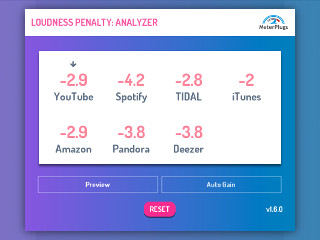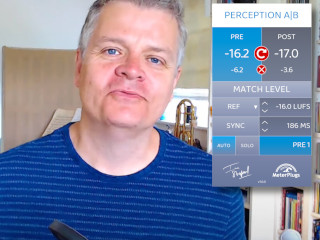Maybe you’ve heard of equal loudness contours, maybe not. If you do a quick Google search, you’ll no doubt find dozens of forum discussions, blog posts and magazine articles about them, and how you can use them to improve your mixing and mastering. But from what I’ve seen, they’re all missing an important detail…
Before we delve into the “problem,” let’s quickly review what equal loudness contours are.
What are Equal Loudness Contours?
Equal loudness contours depict how we perceive different frequencies relative to each other, and how our perception changes depending on playback volume. The following chart shows two sets of equal loudness curves:
For each frequency along a single contour line, the y-axis tells you how loud, in dB SPL, that frequency would need to be in order for it to sound as loud as the other frequencies along the contour. For example, the low frequencies (below 100 Hz) need to be played back at a higher volume than the mid-range frequencies to be perceived as equally loud.
Notice that the contours change shape as the playback volume increases, meaning that our perception of frequencies depends on the playback level.
What About Fletcher-Munson Curves?
You’ll often see “Fletcher-Munson curves” and “equal loudness contours” used interchangeably. The Fletcher-Munson curves, published way back in 1933, are a specific set of equal loudness curves, named after their “discoverers,” Harvey Fletcher and Wilden Munson. Their curves have been superseded by more accurate curves over the years, most notably by the 2003 ISO 226 standard. So, “equal loudness contours” is the more general term.
What’s the Problem with Equal Loudness Contours?
The Fletcher-Munson curves are based on listening tests that involve pure-tones (think sine waves). Consequently, the curves don’t necessarily capture how we perceive real-world sounds. They are a simplification, based on our perception of pure-tones.
For example, studies conducted using noise-bands (rather than pure-tones) resulted in significantly different curves, especially above 1 kHz. This is shown in the following chart, which has three frequency weightings. Notice that the black curve, which is used for measuring noise, is quite different from the other curves, which are based on pure-tones.
(The weightings in this chart are “inverted” when compared to the contours shown in the previous chart. That is because these weightings are meant to compensate for the way we perceive frequencies.)
Even with these “faults” (in reality the curves are not faulty, since the literature is clear that they are based on pure-tones), Fletcher-Munson curves are the basis of A-weighting (seen in blue in the above chart), a frequency weighting used for measuring and describing noise levels, even in microphones! This is why microphone manufacturer Neumann warns on their website:
Reputable manufacturers such as Neumann give additional noise figures according to other (stricter) measurement standards, but just about any manufacturer will give A-weighted self-noise, which happens to be the measurement method that results in the lowest figures.
I also see articles and blogs drawing specific conclusions from equal loudness contour charts, saying things like:
- Boosting your mid-range frequencies will make your music sound louder
- Our perception of frequencies “flattens out” as playback volume is increased
In reality, the methodology used in the original experiments (i.e., the use of pure-tones) doesn’t support these types of conclusions for most real-world sounds.
Where does that leave you? Are equal loudness curves of any use to you? I think there are two takeaways:
Low vs. Mid Frequencies
There is significant evidence that we do perceive low frequencies as being quieter than mid-range frequencies. This is true for pure-tones (Fletcher-Munson), noise (see ITU-R 468) and real-world programmes (ITU-R BS.1770-4). So, when mixing and mastering, your low-frequencies may need to be boosted if you want them to sound as loud as your mid-range, for example.
Playback Volume
Equal loudness curves indicate that our perception of frequencies changes based on playback volume, at least for pure-tones. How this translates to real-world sounds and music is not entirely understood. Nonetheless, this points to the importance of mixing and mastering at calibrated volume levels. Doing so will help to ensure that your judgement is not thrown off by the effects that playback level can have on your perception of different frequencies.
Finally, more of a meta tip: exercise a healthy degree of skepticism, especially when reading anything related to audio, mixing or mastering ![]()








